
The Atlantic 10 Conference (A-10) is a collegiate athletic conference whose schools compete in the National Collegiate Athletic Association's (NCAA) Division I. The A-10's member schools are located in states mostly on the United States Eastern Seaboard, as well as some in the Midwest: Massachusetts, New York, North Carolina, Pennsylvania, Rhode Island, Virginia, Ohio, Illinois, and Missouri as well as in the District of Columbia. Although some of its members are state-funded, half of its membership is made up of private, Catholic institutions. Despite the name, there are 15 full-time members, and four affiliate members that participate in women's field hockey and men's lacrosse. The current commissioner is Bernadette McGlade, who began her tenure in 2008.
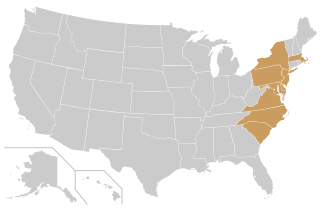
The Colonial Athletic Association (CAA) is a collegiate athletic conference affiliated with the NCAA's Division I whose full members are located in East Coast states from Massachusetts to South Carolina. Most of its members are public universities, and the conference is headquartered in Richmond. The CAA was historically a Southern conference until the addition of four schools in the Northeast after the turn of the 21st century, which added geographic balance to the conference.
The Yankee Conference was a collegiate sports conference in the eastern United States. From 1947 to 1976, it sponsored competition in many sports, but was a football-only league from mid-1976 until its dissolution in 1996. It is essentially the ancestor of today's Colonial Athletic Association (CAA) football conference, and the continuation of the New England Conference, though all three leagues were founded under different charters and are considered separate conferences by the NCAA.
Two popular American sports were invented in New England. Basketball was invented by James Naismith, a Canadian, in Springfield, Massachusetts, in 1891. Volleyball was invented by William G. Morgan in Holyoke, Massachusetts, in 1895. Also, the first organized ice hockey game in the United States is widely believed to have been played in Concord, New Hampshire in 1883.
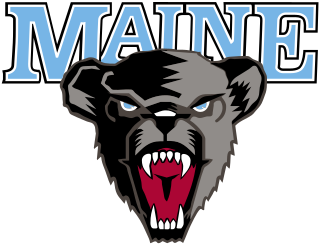
The Maine Black Bears are the athletic teams that represent the University of Maine. A member of the America East Conference, the University of Maine sponsors teams in eight men's and nine women's NCAA sanctioned sports. The men's and women's ice hockey teams are members of Hockey East, and the football team is an associate member of the Colonial Athletic Association.

The 1997 NCAA Division I-AA football season, part of college football in the United States organized by the National Collegiate Athletic Association (NCAA) at the Division I-AA level, began in August 1997, and concluded with the 1997 NCAA Division I-AA Football Championship Game on December 20, 1997, at Finley Stadium in Chattanooga, Tennessee. The Youngstown State Penguins won their fourth I-AA championship, defeating the McNeese State Cowboys by a score of 10−9.

The New Hampshire Wildcats football program is the intercollegiate American football team for the University of New Hampshire located in the U.S. state of New Hampshire. The Wildcats compete in the NCAA Division I Football Championship Subdivision (FCS) and are members of the Colonial Athletic Association (CAA). The team plays its home games at the 11,000 seat Wildcat Stadium in Durham, New Hampshire, and are led by head coach Sean McDonnell, who returned to the program after missing the 2019 season due to a medical issue. Coach McDonnell recently announced his retirement.

Thomas Dudley Shepherd was an American college football player and coach. He served as the head football coach at New Hampshire College of Agriculture and the Mechanic Arts in 1914, Baker University in Baldwin City, Kansas in 1915, and Trinity College of in Hartford, Connecticut in 1919, compiling a career coaching record of 8–13–2.
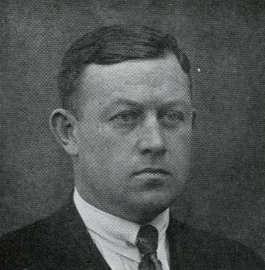
William Harold "Butch" Cowell was an American football player and coach of football, basketball, and baseball. He is best known for his tenure as head coach of the New Hampshire Wildcats football team from 1915 to 1936.

The Maine Black Bears baseball team is the varsity intercollegiate baseball program of the University of Maine, located in Orono, Maine. It is the university's oldest athletic program, having begun play in 1881. It has been a member of the NCAA Division I America East Conference since its founding at the start of the 1990 season. Its home venue is Mahaney Diamond, located on the university's campus. Nick Derba is the head coach. He was named interim head coach prior to the 2017 season. The program has appeared in 16 NCAA Tournaments and seven College World Series. In conference postseason play, it has won eight ECAC Tournaments and five America East Tournaments. In conference regular season play, it has won five America East titles. 19 former Black Bears have appeared in Major League Baseball.

The Vermont Catamounts football program was the intercollegiate American football team for the University of Vermont located in Burlington, Vermont. The team competed in the NCAA Division I and were members of the Yankee Conference. The school's first football team was fielded in 1886. The football program was discontinued at the conclusion of the 1974 season.

The 1947 New Hampshire Wildcats football team was an American football team that represented the University of New Hampshire as a member of the Yankee Conference during the 1947 college football season. In its second year under head coach Bill Glassford, the team compiled an 8–1 record, won the Yankee Conference championship, and outscored opponents by a total of 255 to 59. The team's only loss was to the Toledo Rockets in the second annual Glass Bowl game. The team played its home games at Lewis Field in Durham, New Hampshire.
The 1962 New Hampshire Wildcats football team was an American football team that represented the University of New Hampshire as a member of the Yankee Conference during the 1962 NCAA College Division football season. In its 14th year under head coach Chief Boston, the team compiled a 7–0–1 record, won the Yankee Conference championship, and outscored opponents by a total of 100 to 46. The team's only setback was a tie with Rhode Island. The team played its home games at Cowell Stadium in Durham, New Hampshire.
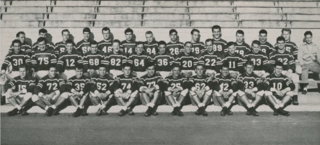
The 1946 New Hampshire Wildcats football team was an American football team that represented the University of New Hampshire as a member of the Yankee Conference during the 1946 college football season. In its first year under head coach Bill Glassford, the team compiled a 6–1–1 record, outscoring their opponents 161–45. The team played its home games at Lewis Field in Durham, New Hampshire.

The 1949 New Hampshire Wildcats football team was an American football team that represented the University of New Hampshire as a member of the Yankee Conference during the 1949 college football season. In its first year under head coach Clarence E. "Chief" Boston, the team compiled a 4–4 record, scoring and allowing an equal number of points, 153. The team played its home games at Lewis Field in Durham, New Hampshire.

The 1936 New Hampshire Wildcats football team was an American football team that represented the University of New Hampshire as a member of the New England Conference during the 1936 college football season. In its 21st season under head coach William "Butch" Cowell, the team compiled a 3–3–2 record, outscoring their opponents 137–76. The team scored 120 of their points in two shutout wins, and only 17 total points in their other six games. The team played its home games at Lewis Field in Durham, New Hampshire.
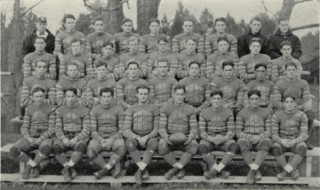
The 1928 New Hampshire Wildcats football team was an American football team that represented the University of New Hampshire as a member of the New England Conference during the 1928 college football season. In its 13th season under head coach William "Butch" Cowell, the team compiled a 3–2–3 record, and were outscored by their opponents, 34–30. The team was shut out five times, although three of those games ended as scoreless ties. The team played its home games in Durham, New Hampshire, at Memorial Field.
The 1941 Maine Black Bears football team was an American football team that represented the University of Maine as a member of the Maine Intercollegiate Athletic Conference (MIAC) and the New England Conference during the 1941 college football season. The team compiled an overall record of 3–2–2 with marks of 1–1–1 against MIAC opponents and 2–1–1 in New England Conference play. The team played its home games at Alumni Field in Orono, Maine.
The 1946 Maine Black Bears football team was an American football team that represented the University of Maine as a member of the Maine Intercollegiate Athletic Conference (MIAC) and the Yankee Conference during the 1946 college football season. In its second season under head coach George E. Allen, the team compiled a 2–5 record and finished in second place in the MIAC and last place in the Yankee Conference. Richard Burrill was the team captain. The team played its home games at Alumni Field in Orono, Maine.
The 1946 Rhode Island Rams football team was an American football team that represented Rhode Island State College as a member of the Yankee Conference during the 1946 college football season. In its second season under head coach Bill Beck, the team compiled a 2–4 record and finished in third place in the conference. The team played its home games at Meade Stadium in Kingston, Rhode Island.














